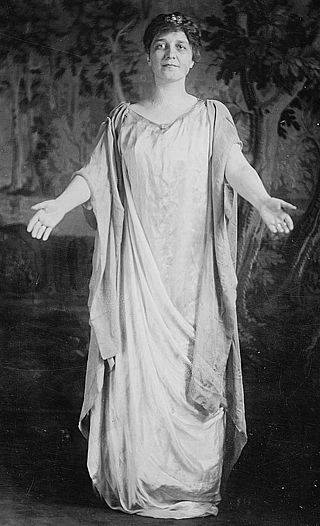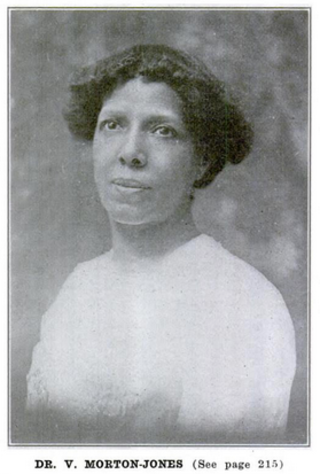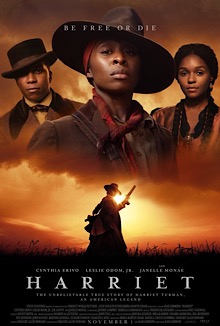
Harriet Tubman was an American abolitionist and social activist. Born into chattel slavery, Tubman escaped and subsequently made some 13 missions to rescue approximately 70 similarly-enslaved people, including her family and friends, using the network of antislavery activists and safe houses known as the Underground Railroad. During the American Civil War, she served as an armed scout and spy for the Union Army. In her later years, Tubman was an activist in the movement for women's suffrage.

Ann Petry was an American writer of novels, short stories, children's books and journalism. Her 1946 debut novel The Street became the first novel by an African-American woman to sell more than a million copies.

May Miller was an American poet, playwright and educator. Miller, who was African-American, became known as the most widely published female playwright of the Harlem Renaissance and had seven volumes of poetry published during her career as a writer.

Harriet Tubman National Historical Park is a US historical park in Auburn and Fleming, New York, associated with the life of Harriet Tubman. It comprises three properties: the Harriet Tubman Home for the Aged, in Auburn; the nearby Harriet Tubman Residence ; and the Thompson A.M.E. Zion Church in Auburn. They are located at 180 and 182 South Street, and 90 Franklin Street, respectively. The Zion Church unit is administered by the National Park Service (NPS), while the South Street properties, including a historic barn and a visitor center, are jointly managed and operated by both the NPS and the Harriet Tubman Home, Inc. The church also works with the NPS in park operations. The Harriet Tubman Grave in nearby Fort Hill Cemetery is not part of the park.

Glenna Smith Tinnin was an American suffragist and the first chairman of the District of Columbia Equal Franchise League. The Equal Franchise League was founded in 1914 as The Woman Suffrage Council. Early in her career Tinnin was an instructor in oratory at various institutes in the upper Midwest. She was a theater director and playwright, and served as chairman of the pageant committee of the American Federation of Arts. She wrote several plays for children including One Night in Bethlehem: A Play of the Nativity (1925) and Arthur Wins the Sword (1928) In December 1931 Tinnin and Brown staged a production of Paul Kester's Tom Sawyer on Broadway at the Alvin Theatre, which closed after 6 performances.

Harriet Tubman Grave is an historic gravesite located in Fort Hill Cemetery at Auburn, in Cayuga County, New York. The granite gravestone marks the resting place of famed African-American abolitionist and Christian Harriet Tubman, who was born into slavery in Maryland in the United States in 1822.
A number of theatre companies are associated with the Harlem Renaissance.

May Howard Jackson was an African American sculptor and artist. Active in the New Negro Movement and prominent in Washington, D.C.'s African American intellectual circle in the period 1910-30, she was known as "one of the first black sculptors to...deliberately use America's racial problems" as the theme of her art. Her dignified portrayals of "mulatto" individuals as well as her own struggles with her multiracial identity continue to call for the interpretation and assessment of her work.

Verina Harris Morton Jones was an American physician, suffragist and clubwoman. Following her graduation from the Woman's Medical College of Pennsylvania in 1888 she was the first woman licensed to practice medicine in Mississippi. She then moved to Brooklyn where she co-founded and led the Lincoln Settlement House. Jones was involved with numerous civic and activist organizations and was elected to the board of directors of the National Association for the Advancement of Colored People (NAACP).

Harriet Gibbs Marshall was an American pianist, writer, and educator of music. She is best known for opening the Washington Conservatory of Music and School of Expression in 1903 in Washington, D.C.

Wilhelmina Marguerita Crosson was an educator and school administrator known for her innovative teaching methods. One of the first African-American female schoolteachers in Boston, she developed the city's first remedial reading program in 1935, and was an early advocate of black history education.

Harriet Tubman Day is an American holiday in honor of the anti-slavery activist Harriet Tubman, observed on March 10, and in the U.S. state of New York. Observances also occur locally around the U.S. state of Maryland. After Juneteenth became a federal holiday, there are growing calls for this day to also be observed at the federal level.

Mary Frances Gunner was an African American playwright and community leader based in Brooklyn, New York.
The Empire State Federation of Women's Clubs (ESFWC) was founded in 1908 and is an umbrella organization for African-American women's groups in New York. The organization worked to help improve the lives of young women and helped care for Harriet Tubman until her death in 1913. The organization was affiliated with the National Association of Colored Women's Clubs, and worked with the NAACP.

Harriet is a 2019 American biographical film directed by Kasi Lemmons, who also wrote the screenplay with Gregory Allen Howard. It stars Cynthia Erivo as abolitionist Harriet Tubman, with Leslie Odom Jr., Joe Alwyn, and Janelle Monáe in supporting roles. A biography about Harriet Tubman had been in the works for years, with several actresses, including Viola Davis, rumored to star. Erivo was cast in February 2017, and much of the cast and crew joined the following year. Filming took place in Virginia from October to December 2018.
Alice W. Wiley Seay was an American social worker and founder of the Empire State Federation of Women's Clubs. She was also involved in charity work through the Dorcas Society and women's clubs. She held leadership roles in many of these organizations.

Bertha Des Verney was an American pianist, composer, music educator, singer, playwright. She was choir and drama director at the Mother African Methodist Episcopal Zion Church in Harlem for over forty years, director of the Washington Music School in Albany, New York, and organized the Ministers of Music and Drama League. She was active in the National Association of Negro Musicians.

Phyllis Terrell Langston was a suffragist and civil rights activist. She worked alongside her mother, Mary Church Terrell, in the National Association of Colored Women's Clubs and the White House pickets during demonstrations made by the National Woman's Party.
The Chocolate Kiddies is a three-act Broadway-styled revue that, in its inaugural production – from May to September 1925 – toured Berlin, Hamburg, Stockholm, and Copenhagen. The show never actually performed on Broadway, but was conceived, assembled, and rehearsed there. Chocolate Kiddies commissioned new works, but was also an amalgamation and adaptation of several leading African American acts in New York, specifically Harlem, intended to showcase exemplary jazz and African American artistry of the Harlem Renaissance. Early jazz was uniquely American; and, while New Orleans enjoys popularity for being its birthplace, the jazz emerging from Harlem during the Renaissance had, on its own merits, captured international intrigue.















